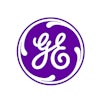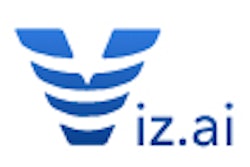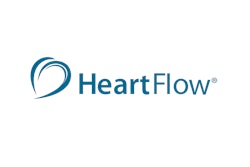
The decision by the U.S. Centers for Medicare and Medicaid Services' (CMS) earlier this month to provide its first-ever reimbursement of a radiology artificial intelligence (AI) algorithm was a significant milestone for the industry, raising hopes that it could set the groundwork for broader coverage of imaging AI software.
Effective for a three-year period beginning in the 2021 fiscal year, CMS has granted new technology add-on payment (NTAP) status for use of Viz.ai's ContaCT (Viz LVO) AI algorithm, which analyzes CT angiography (CTA) exams after acquisition and alerts an institution's stroke specialist team if it detects a large vessel occlusion (LVO) stroke.
For Viz.ai, the NTAP award was the culmination of a two-year process that involved several clinical studies, numerous conversations with CMS on the research data, and support from a number of societies, advocacy organizations, and leading stroke researchers, according to co-founder and CEO Dr. Chris Mansi.
NTAPs are granted by CMS for new and high-priced technologies that provide a substantial clinical benefit and aren't currently covered under a Medicare Severity-Diagnosis Related Group (MS-DRG). In their clinical studies, Viz.ai was able to demonstrate that the technology provided time savings, improved outcomes, and increased access to care, Mansi said.
Under the NTAP, CMS will now reimburse 65% of the estimated loss for a hospital -- up to $1,040 per patient -- for Medicare patients with suspected stroke who have been analyzed by the firm's Viz LVO algorithm and whose estimated costs to use the software exceed the DRG.
The company estimates about half of the Medicare patients with suspected ischemic stroke patients who receive Viz LVO analysis will qualify for payment. There is no maximum annual payout cap for an institution. Importantly, the standard radiology interpretation of the CT scans is not affected by the NTAP; the payment is an add-on for the DRG.
Lessening a burden
Although its customers had reported that Viz LVO provided a clinical benefit, the prior lack of coverage for Medicare patients added financial burden -- a particularly challenging issue during the COVID-19 pandemic, Mansi said.
"The majority of stroke patients are over 65, therefore covered by Medicare, and a significant percentage of these patients end up costing the hospital more money than they are reimbursed," Mansi said. "This add-on payment reduces this loss and allows them to adopt clinically proven technology and provide the highest level of care possible to patients."
VizAI also believes that private payers will consider providing reimbursement for this application in the future.
"Every minute delay results in approximately $1,059 extra cost for that insurer," Mansi said. "Something that can save an average of 66 minutes per patient on average is a meaningful savings for the insurer."
In addition to being positive for the company and the stroke patients, the CMS decision was also good for the AI market as a whole, Mansi said.
"Medicare has acknowledged the benefit that this class of technology can offer for patients and it's the first step to covering AI solutions offering clinical benefit to patients," he said. "It is repeatable in other applications that can demonstrate substantial clinical improvement."
Groundbreaking decision
The NTAP decision was groundbreaking, said Dr. Eliot Siegel of the University of Maryland Medical Center in Baltimore.
"While the NTAP only lasts for three years, it opens up the door to a more long-term recognition by CMS of the value that medical imaging AI software can provide," he said. "This represents an acknowledgement by CMS that timely diagnosis can result in earlier treatment and result in overall savings and improvement in patient care. It will certainly encourage other software vendors that already provide automated analysis of brain CT with and without contrast to apply for NTAP reimbursement and could result in efforts to create a billing code for this application."
The decision also could open the door to gain reimbursement for other potential applications for radiology AI technology.
"One additional use case that comes to mind where a case could be made for analogous savings in time might be AI software that could provide a 'triple rule out' using contrast-enhanced CT in the emergency room for coronary artery disease, pulmonary embolism, and aortic dissection in the evaluation of chest pain or potentially any one of these diagnoses," Siegel told AuntMinnie.com. "One could potentially imagine other use cases, such as evaluation for the presence of peritoneal blood or splenic or vascular injury for a trauma patient, cervical spine fracture on CT, or pericardial tamponade, although these are probably more of a stretch."
Siegel said that he also hopes the NTAP paves the way toward a more general acceptance of the value of imaging AI to improve sensitivity in the diagnosis of breast cancer, lung cancer, and hepatocellular carcinoma, as well as a recognition of AI's potential to characterize specific grades or type of tumor and predict optimal treatment. However, it's more likely that CMS reimbursement for medical AI will continue to move forward very slowly, he said.
Crucially, the CMS decision addresses the Achilles' heel of AI in radiology -- the current lack of reimbursement for the technology, said imaging consultant Michael J. Cannavo.
"It's a way for hospitals to make money, plain and simple," Cannavo said. "And while we can talk about improved patient care and other benefits, the bottom line still comes down to money. If a hospital can make additional money from using a stroke algorithm in addition to using the radiologist's diagnostic interpretation and being paid for it, they are going to do it. Once payment for using other algorithms is approved, you are going to see this market take off."
Outcomes-driven research
The CMS decision highlights the importance of outcomes-driven research, said Rebecca Fahrig, PhD, vice president of innovation for advanced therapies at Siemens Healthineers.
"The ability to get that kind of reimbursement is really triggered by the ability to demonstrate a significant improvement in patient outcomes," she said during a panel discussion at last week's Conference on Machine Intelligence in Medical Imaging (C-MIMI), held by the Society for Imaging Informatics in Medicine (SIIM).
Dr. Michael Perkuhn, general manager of IntelliSpace AI for Philips Healthcare, added that he hopes the CMS decision will pave the way for other outcome-driven AI algorithms.
"This brings then also the discussion towards what is the benefits from AI and what it brings to radiology," said Perkuhn, who is also head of the Computer Vision & AI Lab at the University Hospital Cologne in Germany. "And if we can show it in this form, then we see the value here, which can be a huge push for the community."
Avoiding downstream procedures
During the panel discussion, Erin Angel, PhD, managing director of CT at Canon Medical Systems USA noted that CMS has now decided twice to provide reimbursement for software that affects patient triage in order to achieve a different outcome. In 2017, CMS awarded a new technology ambulatory payment classification (APC) for HeartFlow's FFR/CT Analysis software, paying $1,450.50 for the technical component of the test for patients with suspected coronary artery disease.
"[The CMS decision] was really big news, because it does change that paradigm, especially for AI developers to think about what the clinical end model looks like for their product," she said. "The key to both of [the Viz.ai and HeartFlow] technologies is they potentially reduce the need for downstream procedures. So that is really I think the key barrier to becoming one of those golden child technologies that have a potential to have a reimbursement attached to use of the technology."
Reimbursement is good news for the industry in general, especially in the AI domain, said Avinash Gopal, PhD, head of data science at GE Healthcare.
"This type of reimbursement and this kind of encouragement leads to a lot of creative thoughts here and a lot of opportunities open up, not only for university and academic investigators but also for the community at large," he said. "These are the kinds of things that will cut the downstream costs that are associated with it."
Siegel noted that the NTAP for Viz.ai and HeartFlow's success in getting reimbursement will likely make medical AI a more attractive investment for venture capital and other sources, as well as spur more attention to outcomes research.




















